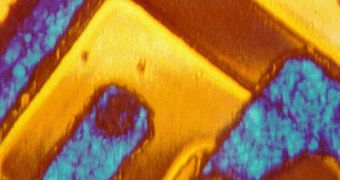A group of scientists at the University of California (UCLA) has managed to get a five percent boost in conventional transistors' performance without tampering with the manufacturing process. However, they re-created the circuit shape and produced 30 percent shorter wires than in the conventional designs. The researchers figured out that optimizing the layout during the computer design stage brings an amazing boost in performance and speed, without any extra costs or planning.
The explanation is simple and is related to decreased timings in math operations. "It's fairly easy to model this problem mathematically. You can think of nodes as points on a graph, and you can think of the interconnects as hyper-edges that connect more than two noes. We can use mathematics to determine how the placement problem should be solved. We use a mathematical technique called multiscale methods, in which we group nodes together until we get a mathematical problem that is small enough to solve," said Jason Cong, an UCLA professor and chair of computer science.
This technique is however crippled by some design challenges that apply when switching from the 130-nanometer to 90-nanometer. The software that models 90-nanometer circuits needs to be recompiled. The software that is used to draw 130-nanometer circuitry could draw straight lines normally, but this is not possible at 90-nanometer scale anymore.
In order to fight the new shortcomings, the researchers have begun to include other elements (lines, squares and rectangles, shapes) in the proximity of the laser light, in order to focus it correctly. This was the most time-consuming step in developing the new technology.
All in all, the new "technology innovation" is only limited to common sense. What is more striking is how could major semiconductors manufacturers such as Intel, Samsung, Toshiba or AMD miss this aspect in their calculations. The semiconductor industry is running at full load and, for the moment, optimization is the key factor towards future development. 5 percent is not such a great gain, but, as long as it comes for free, it's worth giving it a shot.

 14 DAY TRIAL //
14 DAY TRIAL //